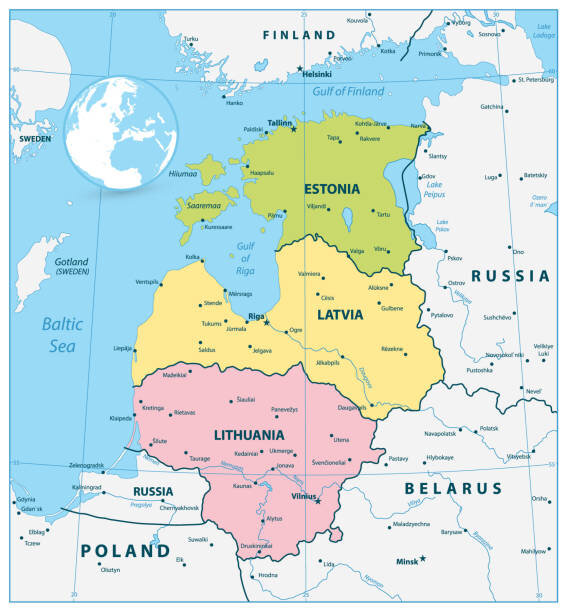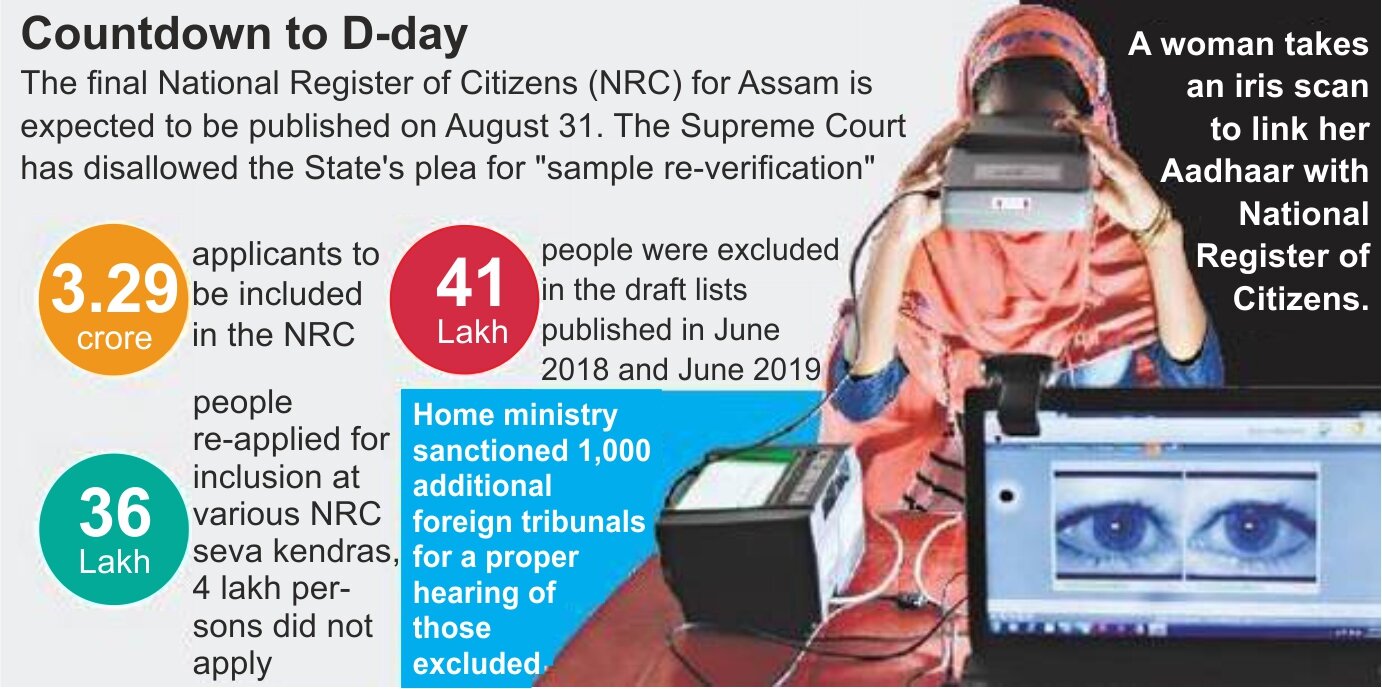Social Justice
Compulsory Rural Service for Doctors
The Supreme Court has suggested the Union Government and the Medical Council of India to have a uniform policy regarding the compulsory service to be rendered by the doctors who are trained in government institutions.
- The Association of Medical Super Speciality Aspirants and Residents and others had challenged the state government’s regulations that imposed a condition of compulsory service for a minimum fixed period with the state.
- Doctors complained that such a condition violated the right of an individual to carry on his profession, amounted to ‘forced labour’ in violation of their constitutional right and would impede the progress of their careers.
- However, the Supreme Court ruled that doctors across the country are bound by the compulsory bonds executed by them at the time of their admission in post-graduate and super-speciality medical courses.
- The SC noted that the huge infrastructure has to be developed and maintained for running medical colleges with post-graduate and super-speciality courses, the amount of fees charged from students is meagre in comparison to private medical colleges.
- Moreover, reasonable stipend is also paid to these doctors.
- It affirmed policies of states of Andhra Pradesh, Goa, Gujarat, Himachal Pradesh, Karnataka, Kerala, Maharashtra, Odisha, Rajasthan, Tamil Nadu, Telangana and West Bengal.
- Compulsory Bonds: It binds doctors with conditions to serve in their respective states for a certain fixed period, in rural areas. The doctors’ original mark-sheets, certificates and other documents are also usually retained by the state authorities after the completion of speciality courses.
- Compulsory service is in the larger public interest and beneficial for deprived sections of society, the top court ruled in favour of the policy of various state governments to have compulsory bonds to be executed by the doctors before their admissions to PG and super speciality courses.
- In the urban areas, there are 176 doctors for every 100,000 people. In the rural area, the figure is an abysmal less than eight doctors for every 100,000 people scattered over large areas. And every year around 31,000 doctors graduate from 269 private and government medical colleges in India.
Need of Compulsory Bonds
- There is a need to provide healthcare to people and due to the scarcity of super specialists in their states, it is not arbitrary to utilise the services of doctors who were beneficiaries of government assistance.
- The state governments have introduced compulsory service bonds to protect the fundamental right of the deprived sections of society guaranteed to them under Article 21 of the Constitution of India.
Violation of Fundamental Right
- The appellants contended that their rights guaranteed under Article 21 of the Constitution of India have been violated.
- The SC rejected this argument on the grounds that, while balancing communitarian dignity vis-à-vis the dignity of private individuals, the scales must tilt in favour of communitarian dignity.
Indian Economy
National Conference of Tourism Ministers
The one-day National Conference of Tourism Ministers concluded on 20th August 2019 in New Delhi.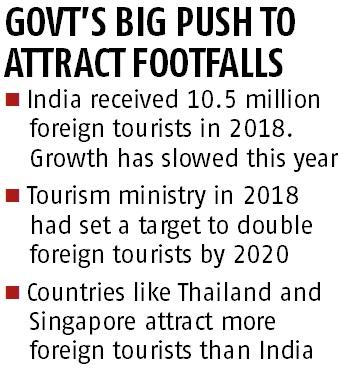
- The conference was organized by the Union Ministry of Tourism and was attended by the State Tourism Ministers of 19 States, Secretaries of Tourism and senior officials from the States and Union Territories (UTs) who deliberated on various issues related to the development and promotion of tourism.
- The Tourism Minister launched the Hindi version of the new Incredible India portal at the conference.
- He announced that the Arabic, Chinese and Spanish versions of the new Incredible India website will be launched next month.
- The new Incredible India website was launched on 14th June, 2018. The interactive website showcases India as a holistic destination, revolving around major experiences such as spirituality, heritage, adventure, culture, yoga and wellness.
- The Tourism Minister also launched the Incredible India Tourist Facilitator Certification (IITFC) portal during the conference.
- The Incredible India Tourist Facilitator Certification (IITFC) Programme is a digital initiative of the Ministry of Tourism, Government of India for the citizens of India to become a part of the booming Tourism Industry.
- It is an online programme where one can learn about tourism at their own time, space, path and pace.
- The successful completion of this programme would enable the learner to become a Certified Tourist Facilitator of Ministry of Tourism, Government of India.
- He urged all the States and UTs to open their important monuments till late night for visitors.
- Recently, in order to promote night tourism, the Culture Ministry has decided to open 10 historical monuments till 9 PM for common visitors across the country.
- The Tourism Minister also handed over three new Memorandum of Understandings (MoUs) and five new Letters of Intent (LoIs) to the prospective Monument Mitras at the conference.
- The government has decided to introduce a flexible e-tourist visa regime for over 160 countries based on footfall, with higher visa fee for peak season between July and March, and a significantly lower fee for travel during the lean season between April and June.
- The government has introduced a new five-year e-visa category for which tourists will have to pay $80.
International Relations
Baltic Nations
The Vice President of India is on a trip to Lithuania, Latvia and Estonia from 17th-21st August 2019, the first-ever high-level visit from India to the three Baltic countries.
- The Vice President’s visit to the three Baltic nations is to advance India's outreach to the important countries in the region.
- The V.P. also expressed gratitude to Latvia and Lithuania for backing India for permanent membership in an expanded and reformed United Nations Security Council.
- The Vice President addressed the first-ever India-Latvia Business Forum and called for taking the bilateral trade and economic cooperation to new heights.
- He also unveiled the bust of the Father of the Nation, Mahatma Gandhi at the National Library of Latvia.
- The Vice President’s visit to Estonia includes talks on the development of bilateral relations as well as possible cooperation in the UN and international organisations.
Baltic Countries
- Baltic states, the northeastern region of Europe, includes the countries of Estonia, Latvia, and Lithuania, on the eastern shores of the Baltic Sea.
- The Baltic states are bounded on the west and north by the Baltic Sea, which gives the region its name, on the east by Russia, on the southeast by Belarus, and on the southwest by Poland and an exclave of Russia
- In 1991, their then popularly elected governments declared independence from the Union of Soviet Socialist Republics (USSR) with overwhelming support.
- The Baltic region is not rich in natural resources. Though Estonia is an important producer of oil shale, a large share of mineral and energy resources is imported.
- Agriculture remains important to the Baltic economy, with potatoes, cereal grains, and fodder crops produced and dairy cattle and pigs raised.
- India and Baltic countries have historical connect and common linguistic roots. The cutting edge technology and innovation ecosystems of the Baltic countries complement India’s huge market and appetite for these technologies.
Governance
Final National Register of Citizens
The final National Register of Citizens (NRC) to be published on August 31, 2019.
- Recently, the Ministry of Home Affairs (MHA) clarified that those not included in the final list of the (NRC) in Assam will get 120 days to appeal against their exclusion in the Foreigners’ Tribunal.
- The MHA will bring about an amendment in the NRC rules which stipulate only 60 days for an appeal to be made in the Foreigners’ Tribunal.
- Every individual, whose name does not figure in the final NRC, can represent his/her case in front of the appellate authority i.e. Foreigners Tribunals.
- Under the provisions of Foreigners Act 1946 and Foreigners (Tribunals) Order 1964, only Foreigners Tribunals are empowered to declare a person as a foreigner.
- Thus, non-inclusion of a person’s name in NRC does not by itself amount to him/her being declared as a foreigner.
- However, the final publication of the NRC poses a legal challenge for the Election Commission of India (ECI).
- ECI in 1997, while revising the state’s voter list, introduced a new category of voters for Assam marked as ‘D’ (Doubtful) voters.
- D voters are a category of voters in Assam whose citizenship is doubtful or under dispute.
- While ‘D’ voters continue to remain on Assam’s electoral roll, they cannot vote in an election unless their case is decided by a Foreigners’ Tribunal. However, those excluded from the draft NRC were allowed to vote, creating an anomaly.
- So, ECI has to revise the D-voters list in a short span of time.
- ECI in 1997, while revising the state’s voter list, introduced a new category of voters for Assam marked as ‘D’ (Doubtful) voters.
Foreigners’ Tribunals
- The Foreigners’ Tribunals are quasi-judicial bodies meant to “furnish opinion on the question as to whether a person is or is not a foreigner within the meaning of Foreigners Act, 1946”.
- The MHA constitutes foreigners tribunals whenever required to look into the question of whether a person is or not a foreigner within the meaning of Foreigners Tribunals act, 1946.
- In the backdrop of finalization of NRC, this order was amended in 2019, to empower individuals to approach the Tribunals. Earlier, only the State administration could move the Tribunal against a suspect.
Indian Economy
‘Farm in’ Expenditure
Recently, the Central Board of Direct Taxes (CBDT) has clarified that ‘farm in’ expenditure incurred by oil Exploration and Production (E&P) companies would be treated as an ‘intangible asset’ and thereby it would be eligible for claim of depreciation.
- After this Farm-in expenditure will become unamortised expenses.
- Unamortised Expenses are those expenses that are written off to the company's Statement of Profit/Loss periodically.
- The unamortised expenditure is allowed as a deduction and the surplus is taxed.
- Hence, this will boost domestic and foreign investment and enhance the domestic production of oil and gas.
- Farm in expenditure is incurred when an entity in the oil and gas business acquires a Participating Interest (PI) from another entity in oil/gas block(s) and becomes part of the Production Sharing Agreement (PSC).
- Participating interest is like holding equity (shares) in a company.
- A holding of 20% or more of the shares of an undertaking is presumed to be a participating interest.
- The CBDT has also acknowledged that it is common international practice for (E&P) companies to buy (farm-in) and sale (farm-out) their PI in the PSC to share the risk, bring new and niche expertise and technologies
Central Board of Direct Taxes (CBDT)
- It is a statutory authority that functions under the Central Board of Revenue Act, 1963.
- It is a part of the Department of Revenue in the Ministry of Finance.
- It provides inputs for policy and planning of direct taxes in India and is also responsible for the administration of direct tax laws through the Income Tax Department.
- Direct Taxes include income tax, corporation tax etc.
Production Sharing Contract
- It is a term used in the Hydrocarbon industry and refers to an agreement between Contractor and Government whereby Contractor bears all exploration risks, production and development costs in return for its stipulated share of (profit from) production resulting from this effort.
- Production Sharing Contracts became widely adopted as part of the New Exploration and Licensing Policy (NELP) launched by the Government in 1997 for enhanced exploration of oil and gas resources in the country.
- PSC allows the contractor to recover his cost, before giving Government its share in the contractor's revenues. Until a profit is made, no share is given to the Government, other than royalties and cesses.
Important Facts For Prelims
NEXT Exam
The Union Health Ministry to prepare itself for the implementation of the common final year undergraduate medical examination (NEXT) which will come into effect in three years.
- The National Medical Commission Act has proposed a common exit examination — National Exit Test (NEXT), at the end of the MBBS course.
- This test shall be held to grant a licence to practice and will also be the basis of admission to postgraduate courses.
- According to the government, the NEXT will be as effective as the National Eligibility cum Entrance Test (NEET) which will ensure that only deserving candidates get admission in a private medical institute.
- As per the earlier provisions, any student who obtains 50% marks in class 12, could gain admission to MBBS courses.
- Colleges negotiated with students and conducted their own admission tests in a totally non-transparent manner. As a result, many undeserving students got admission.
- Now only NEET qualified students can get admission, which ensures that merit prevails in admissions.
- NEXT will ensure that there is a certain standard of medical graduates who pass out from medical colleges.
Important Facts For Prelims
Quick Response Code for Buildings
- The Haryana government will implement an ambitious project of installing an 18-digit Quick Response (QR) code carrying metal plates outside all built-up structures across the state. The move is intended to streamline property-tax collection.
- The metal plates to be affixed to the buildings will contain a Unique Property Identification and QR code (Digital Door Number).
- Each QR code will have accurate plot area measurement, floors constructed at the time of the survey using both base map service and on-ground field measurements.
- The government has already begun a drone-based Geographic Information Survey (GIS) to analyse all residential, commercial, industrial, institutional and vacant properties in the state.
Benefits
- The system will result in enhancing the property-based tax revenues manifold. It will increase funds for the Urban Local Bodies for future development through a real-time property tax collection mechanism.
- Geo-tagged property data will be helpful for planning and day-to-day developmental work. In case of any alteration of the building/ structure, the QR code will also enable residents for faster building approvals and Change of Land Use.
- Not only tax collection, but once the records are digitised, it will enable the government to link other government schemes and transfer of benefits to citizens using the same QR codes.
Important Facts For Prelims
Arab ki Sarai Baoli
Arab ki Sarai Baoli is being revived by Archaeological Survey of India (ASI) and Agha Khan Trust for Culture (AKTC) with the support of German Embassy.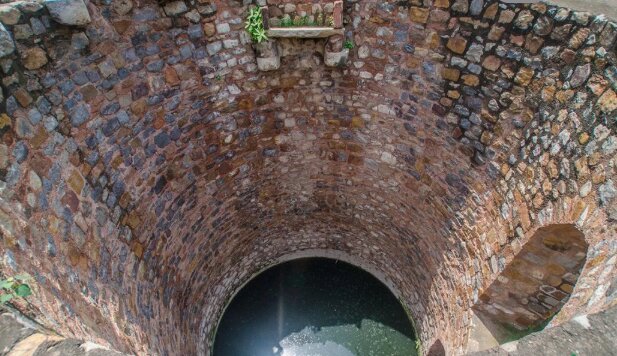
- Arab Ki Sarai Baoli was built in the 1560s by Hamida Banu Begum, who was wife (chief consort) of Mughal emperor Humayan, to accommodate 300 Arabs whom she had brought from Mecca.
- It is situated within the premise of Humayun's Tomb Complex, Delhi.
- It is a unique ‘L’ shaped baoli.
Baoli
- Baolis or step-wells refer to man-made water tanks.
- The main purpose of baoli is water conservation and groundwater recharge.
- The structures bear witness to the fact that even before the modern world became aware of the threats of depleting freshwater, people in those times realised the gravity of conservation.
Baoli in Delhi
- There are around 14 baolis in Delhi namely Tughlaqabad Fort Baoli, Rajon Ki Baoli, Gandhak Ki Baoli, Qutub Sahib Ki Baoli, Anangtal Baoli, Wazirpur Monument Complex Baoli, Hazrat Nizamuddin Ki Baoli, Arab Ki Sarai Baoli, Purana Quila Baoli, Agrasen Ki Baoli, Feroz Shah Kotla Fort Baoli, Red Fort Baoli, Hindu Rao Hospital Baoli and Dwarka Baoli.
Important Facts For Prelims
Baya Weaver
Baya weaver (Ploceus philippinus) is a bird found in South and Southeast Asia.
- The bird is known for its nest building skills, it makes a long hanging nest with a bulbous chamber and a narrow tubular entrance.
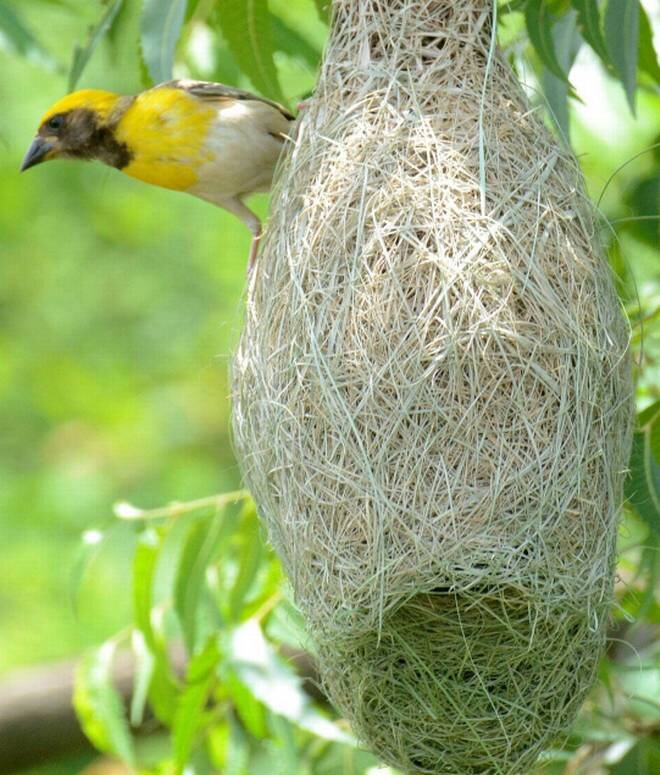
- The construction of the nest is initiated by a male Baya Weaver but completes it only after getting a female mate.
- Grasslands are the natural habitat of the Baya weaver. Rapid urbanization and change in land use pattern have led to the loss of habitat of the bird.
- However, its IUCN Red List status is Least concern.

